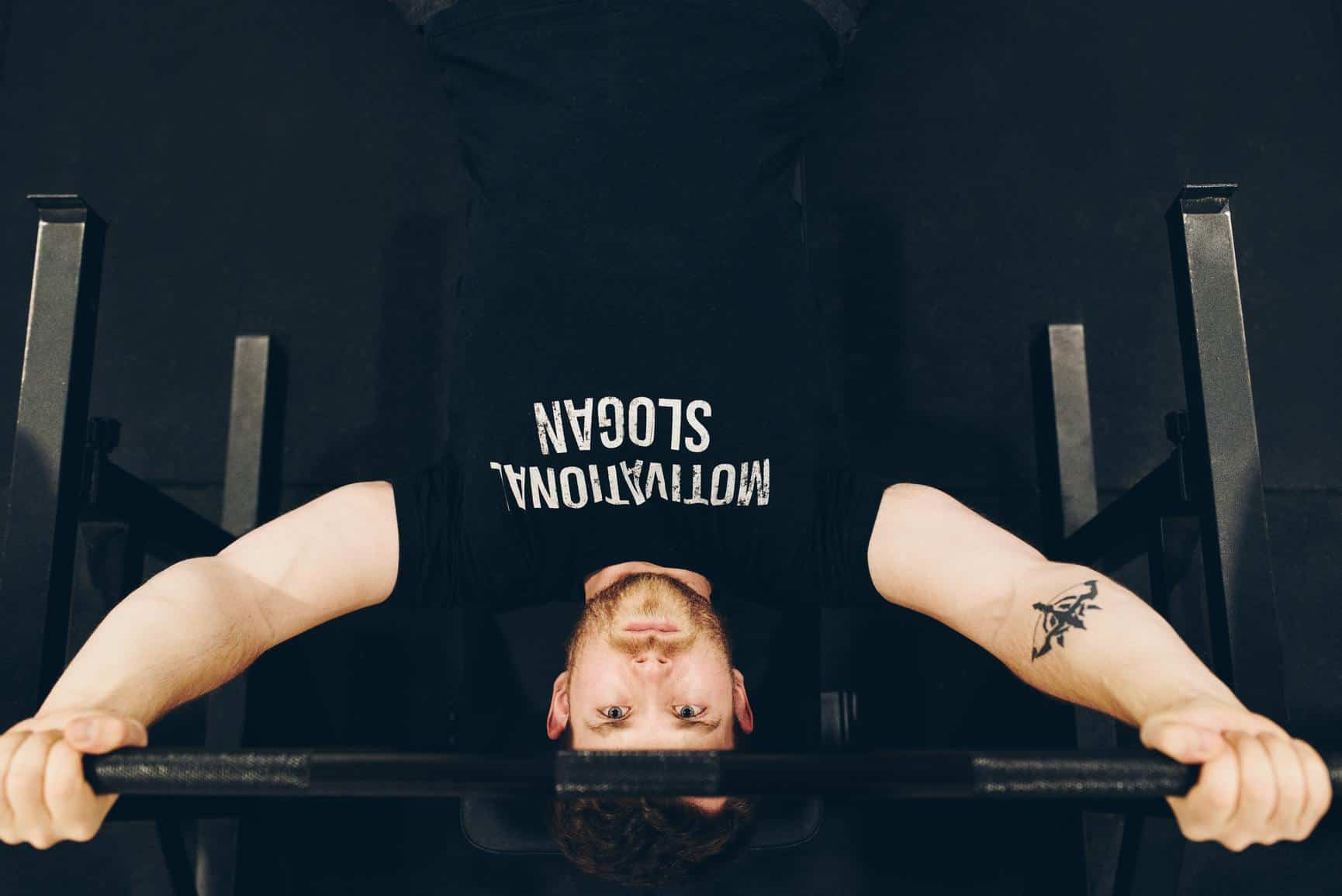Photo Credits- Photo by serjan midili on Unsplash
Many gym-goers ask this exciting question: Can I train chest and back muscles together on a single day? The answer is yes, you can! But there are some things to consider while training both these muscles together.
The main reason why you can train your chest and back muscles together is that they are both antagonists, i.e., both are opposite muscles. So if one muscle works, the other gets a rest, and vice versa. This way, you can give each muscle enough time to recover. So, there is no harm in training both these muscles together.
But the most famous workout splits are chest and triceps, back and biceps, and so on. Here, both have similar functions, i.e., one muscle is for pushing and the other for pulling movements. So why should you train both chest and back together? Before explaining that, it’s essential to know about the functions of each of these muscles.
Contents
Functions of Chest and Back Muscles
There are two chest muscles in the human body: pectoralis major and minor. The Pectoralis major is the thick layer that makes up the bulk of the chest. On the other hand, pectoralis minor is a thin triangular muscle.
The Pectoralis major’s primary function is flexion, adduction, and internal rotation of the humerus. In contrast, the pectoralis minor helps to create a downward rotation of the scapula and is also used for pushing the shoulder blades down ( scapular depression).
In simple words, chest muscle is used during pushing movements, therefore exercises like push-ups, bench press, and dumbbell flys are examples of chest exercises.
On the other hand, the back has so many muscles, the major ones being latissimus dorsi, rhomboids, and teres major. All these muscles are used for pulling movements like rowing, pull-ups, chin-ups, etc. So why train these antagonistic muscles together? Let’s find the answer below!
Why Should You Train Chest And Back Together?
As both have different functions and are opposite muscles, it is still a good idea to train both of them together, and the main reason behind this is-
Recovery
If you train opposite muscles simultaneously, you allow enough time for the muscles to recover after each exercise. For example, if you do a bench press of 3 sets and then do a lat pulldown, then during the tour back exercise, you are giving rest to the chest so it can recover from the heavy bench presses you did before lat pulldowns.
So when you are finished with the lat pulldowns, your chest is again ready for another exercise because you allowed your chest muscles to recover. This way, both these muscles will get enough rest to recover from the intense exercise.
Prevent Plateau
Many people follow the same workout program for several months and stop seeing results after some time. This happens because you are training the same way for months. To avoid this plateau, change your workout program every 8-12 weeks, depending on your experience.
One of the typical workout splits is chest-triceps, back-biceps, and shoulder-legs. Apart from that, you also have an upper-lower body split, which works great for beginners. But there is another excellent workout split that many people don’t talk about – chest-back, biceps-triceps, and shoulder-legs workout split.
So, if you are following this workout routine and changing your old split routine, it will be a new stimulus for your muscles that will force the body to produce results.
Both Are Major Upper Body Muscle Groups
Training your chest and back together is a perfect option if you are a beginner or intermediate. Beginners can perform chest and back together with shoulder exercises, which cover the major muscle groups of the upper body. They can do lower body exercises the next day, making it a very effective upper-lower body workout split for beginners.
If you work your back and chest together, your biceps and triceps will also assist during the exercise; therefore, you don’t have to train it separately if you are a beginner. But people who have already been working out for a while and are at an intermediate stage should train their arms separately.
Helps To Increase Strength And Size
The chances of lifting heavy weights are higher when training back and chest together. Most major lifts, like bent-over rows, bench presses, and one-arm rows, are all heavy compound movements that help to stimulate growth. So training both chest and back will make you stronger, and you will gain a lot of size with proper nutrition and rest.

Important Things to Consider
Design Your Program Wisely
When you design your workout program, ensure you are not training your arms the next day after your chest and back workout. This is because your arms and shoulders will already be working during the chest and back workout, so there should be a rest day in between. A gap of 48 hours between these two workouts should be there.
For example, let’s say if you train your chest and back on Monday, then on the next day, you should train your legs. On Wednesday, you can train your biceps, triceps, and shoulders together. This way, you give enough time to recover your muscles.
Avoid Overtraining
Many people try to do more and eventually overtrain their bodies to a level where they feel tired and weak. This usually happens when the intensity, volume, and frequency are high. When you train your chest and back together, there is an excellent chance of overtraining because both are big muscles and take time to recover.
Also, most back and chest exercises are compound movements like deadlifts, bent-over rows, bench presses, and one-arm rows. Because of this, you should reduce either the load or the volume. A rest day is also a good option if you consistently lift heavy weights. Also, 6-8 exercises are enough if you are at an intermediate level. Mostly, training for five days a week is recommended.
Types of Chest and Back Training Split
There are two main ways to train your chest and back on the same day-
Training one body part first and then the other one
Here, you will train the chest or back entirely and then the different body parts. You can train this way if you have enough time for the workout because it will take some time to complete it.
For example, let’s say you are training your back at the beginning then you will do 4-5 back exercises first, finish the back workout, and then jump over to the chest exercise.
Training both chest and back alternatively
This is another excellent way to design your workout program. Here, you will complete one chest exercise and then the back and vice versa. This way, you are giving each muscle enough recovery time.
For example, doing 1 set of lat pulldowns and then super setting with an incline bench press is an excellent example of this kind of workout. Supersets are good for creating a metabolic demand for muscle building.
You can also complete three sets of lat pulldowns first and then the incline bench press. This is good for those who lift heavy weights and need some rest in between each set to recover.
Mixing both these types
This is another good option! You can start with heavy compound movements like deadlifts or bench presses at the beginning. Train both muscles individually to build strength and then end with supersets like seated cable rows and dumbbell flys. This will allow you to focus on both strength and muscle hypertrophy.
Final Thoughts
Training your chest and back together is not a bad option. You can train them together, but ensure you design your program correctly. It would be best not to overtrain your muscles by doing many exercises and lifting heavy weights without proper rest and recovery. You have to be smart in designing and sequencing your workout to create the best results without any chance of injury or fatigue.
Seeking the help of a fitness professional is always advisable before starting any workout. So, if you want any help, you can contact me directly at roshanspillai1512@gmail.com.
If you found this blog helpful, please share it with your friends, who can also learn from it. Also, share your views in the comment section below about whether you should train your back and chest together.

Roshan Pillai is an ACSM Certified Personal Trainer with more than 6 years of experience in lifting weights and guiding people to get fit. He has worked as a personal trainer in gyms and is the owner and editor of fitnessproworkout.com. He is passionate about fitness and helping people to get in shape.










Trackbacks/Pingbacks